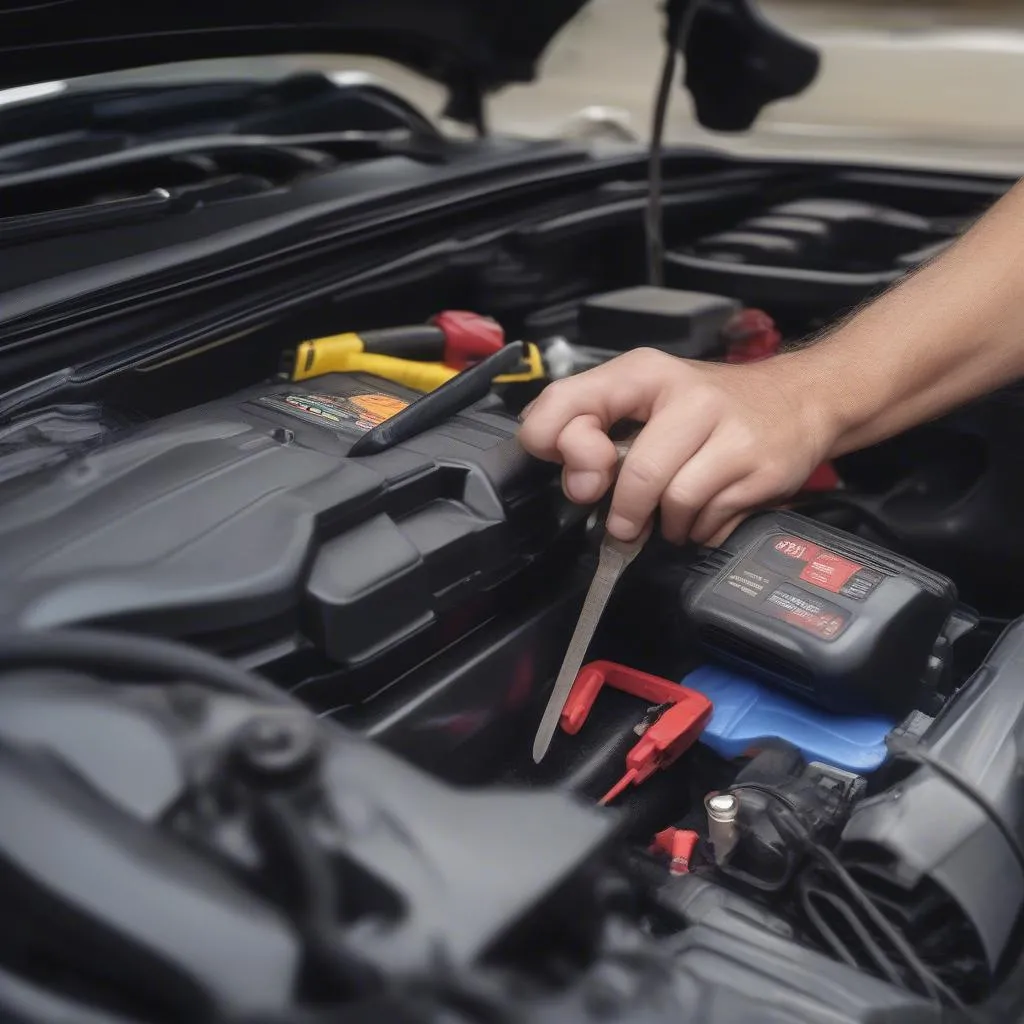Jumper cables not starting car? You’re not alone. This frustrating situation can leave you stranded, but understanding the reasons why jumper cables sometimes fail and knowing the proper jump-starting procedure can get you back on the road. We’ll explore common causes and solutions, offering expert advice for diagnosing and fixing the problem.
Why Jumper Cables Might Not Work
Sometimes, even with seemingly good jumper cables, your car won’t start. Several factors can contribute to this. A dead battery in the donor car is an obvious culprit. Corroded battery terminals can also prevent a proper connection, hindering the flow of power. Faulty jumper cables, either internally damaged or with insufficient gauge for the required current, are another common issue. And finally, a problem more serious than a dead battery, like a bad starter or alternator, can prevent the engine from turning over even with a jump.
car not starting even with jumper cables
Checking the Basics
Before assuming the worst, ensure you’re using the jumper cables correctly. Positive to positive, negative to negative – a seemingly simple rule, yet easily mistaken, especially in low-light conditions. Make sure the clamps are making solid contact with clean battery terminals. A loose connection can dramatically reduce the effectiveness of the jump.
Beyond the Dead Battery: Other Culprits
While a dead battery is the most common reason for needing a jump, jumper cables not starting car can indicate deeper issues. A failing starter motor might struggle to crank the engine even with a boost. Similarly, a faulty alternator, unable to recharge the battery, will render a jump-start a temporary fix at best. Other electrical problems, like a blown fuse or damaged wiring, could also be the underlying cause.
Is It the Starter or the Alternator?
Distinguishing between a starter and alternator problem can be tricky. If the engine doesn’t crank at all, even with a jump, the starter is the likely suspect. If the car starts with a jump but dies shortly after, the alternator is likely the issue, failing to recharge the battery.
prevent car battery from draining
How to Properly Jumpstart a Car
Properly jumpstarting a car is crucial to avoid damage and ensure success. Here’s a step-by-step guide:
- Park the cars: Position the vehicles close enough for the cables to reach but not touching.
- Prepare the cars: Turn off both ignitions and engage the parking brakes.
- Connect the cables: Red to positive on both batteries, then black to negative on the dead battery and a grounded metal surface on the donor car.
- Start the donor car: Let it run for a few minutes to charge the dead battery.
- Start the recipient car: If it starts, let it run for at least 20 minutes to recharge.
Jumper Cables Not Starting Car: What to Do Next?
If, after following these steps, your jumper cables not starting car, the problem likely extends beyond a simple dead battery. Further diagnosis by a qualified mechanic is recommended. They can pinpoint the exact issue and perform the necessary repairs.
“Often, when jumper cables don’t work, people assume the cables are faulty,” says John Smith, Automotive Electrical Engineer at Smith Auto Solutions. “While this is sometimes the case, it’s essential to check for other underlying electrical issues, especially if the battery is relatively new.”
“Never underestimate the importance of good quality jumper cables,” adds Maria Garcia, Lead Technician at Garcia Auto Repair. “Investing in a reliable set can save you a lot of hassle in the long run.”
“A common mistake is connecting the cables incorrectly,” advises David Lee, Senior Mechanic at Lee’s Automotive. “Always double-check the positive and negative connections before attempting a jump.”
Conclusion
Experiencing jumper cables not starting car can be frustrating, but understanding the possible causes and following the proper jump-starting procedure can help resolve the issue. Remember to prioritize safety and seek professional help if the problem persists. Don’t let a dead battery or other electrical issues keep you off the road. With a little knowledge and preparation, you can get back behind the wheel in no time.

